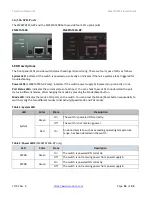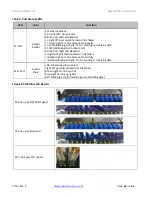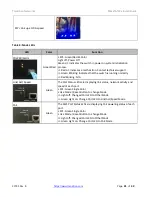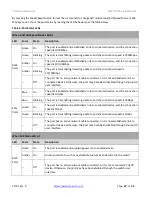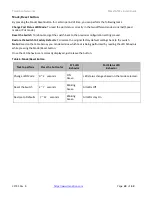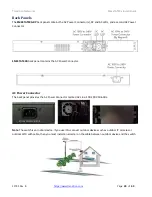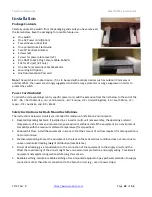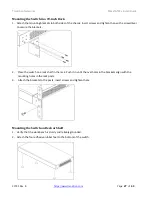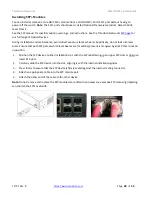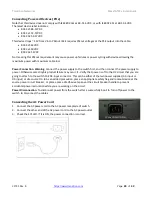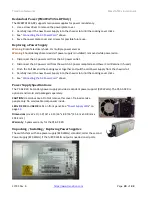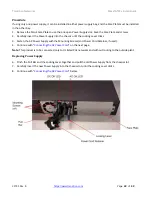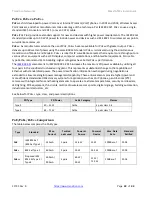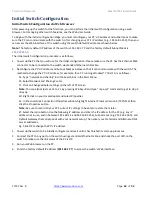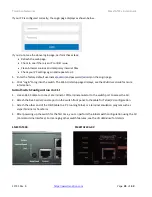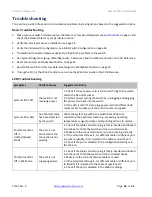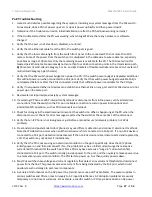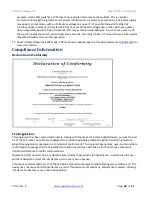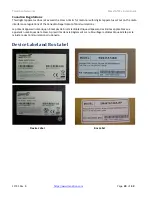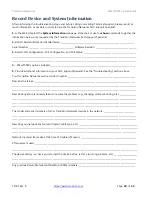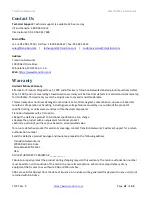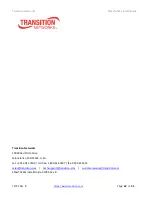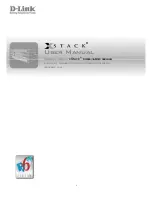
Transition Networks
SMxxTAT4Xx Install Guide
33785 Rev. B
Page
33
of
43
PoE vs. PoE+ vs. PoE++
PoE
was first developed to power Voice over Internet Protocol (VoIP) phones. In 2001 and 2002, Wireless Access
Point makers, and other manufacturers took advantage of the technique. Per IEEE 802.3af, PoE can use a single,
standard RJ45 connector and CAT 5 (or even CAT 3) cable.
PoE+
(PoE Plus) provides extended support for new end devices with higher power requirements. The IEE 802.3at
standard provides up to 30 W of power to include newer end devices such as IEEE 802.11n wireless access points,
surveillance cameras, etc.
PoE++
: As manufacturers advance the use of PoE, PoE++ became available for PoE with greater output. PoE++
delivers up to 60 watts of power using the same 802.3at standard. PoE++ is delivered using the simultaneous
transmission of Mode A and Mode B. PoE++ is ideal for IP surveillance cameras that require more throughput or a
various other equipment such as LCD displays, computer workstations, and biomedical equipment.
Min. cable
type Cat5e; recommend Cat 6A cabling. Higher categories have better PoE++ performance.
The
amendment to IEEE Std 802.3-2015 increases the maximum PD power available by utilizing all
four pairs in the specified structured wiring plant. This represents a substantial change to the capabilities of
Ethernet with standardized power. The power classification information exchanged during negotiation is
extended to allow meaningful power management capability. These enhancements provide higher power and
more efficient standardized PoE delivery systems for applications such as VoIP phones, pan-tilt-zoom (PTZ)
cameras with integrated fans and heating elements to operate at extreme temperatures, security card readers,
LED lighting, POS equipment, thin clients, multi-radio wireless access points, digital signage, building automation,
industrial sensors/actuators, etc.
See below for PoE++ type, class, and power descriptions.
PD Type
PD Power
Cable Category
Classes
Type 3
40
–
51 W
Cat5e
4 pairs class 5-6
Type 4
62
–
71 W
Cat5e
4 pairs class 7-8
PoE/PoE+/PoE++ Comparison
The table below compares the PoE types.
Type
Standard
Max.
Current
Twisted
pairs used
Power at
Source
Power at
Device
Max. Data
Rate
Standard
Ratified
PoE
IEEE 802.3af
(802.3at Type 1)
350 mA
2 pairs
15.4 W
13 W
1000Base-T
2003
PoE+
802.3at Type 2
600 mA
2 pairs
30 W
25.5 W
1000Base-T
2009
PoE++
Proposed IEEE
802.3bt Type 3 /
Type 4
600 mA /
900 mA
4 pairs
60 W /
90 W
51 W /
71.3 W
10GBase-T
2018

